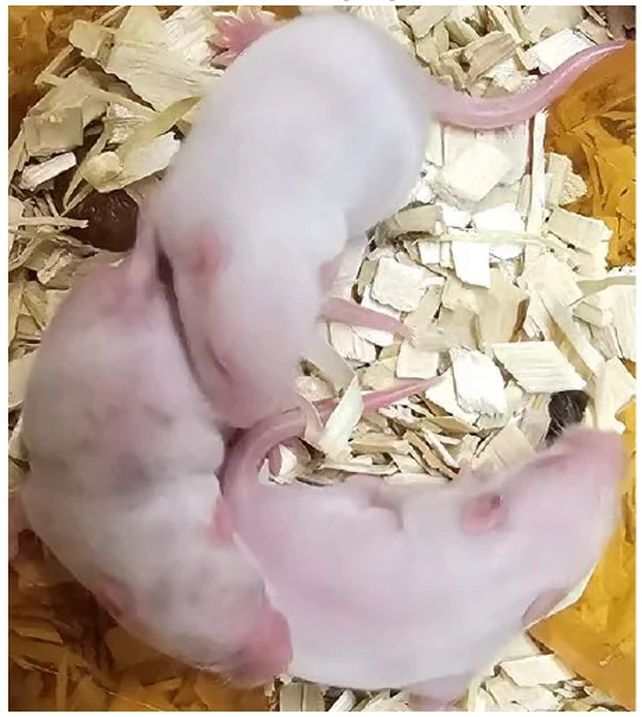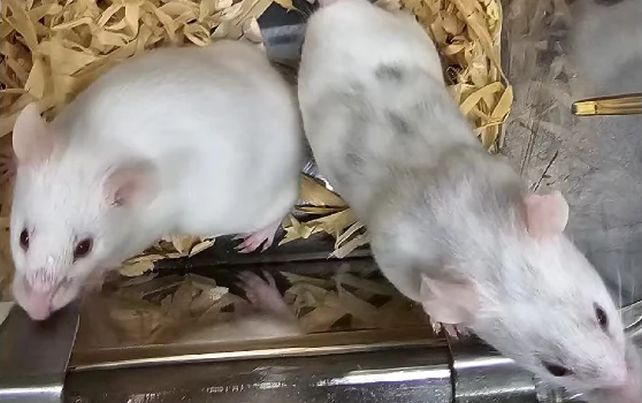With their beady little black eyes and mottled gray fur, the mice born in a recent laboratory experiment in Hong Kong are unlike any other of their kind, or indeed any other animal.
And yet, despite their fundamental differences, they couldn’t seem more common, a fact that reveals an astonishing truth about our evolutionary history.
The mice were spliced with genes from a single-celled microbe, a choanoflagellate. Although the microorganism itself is not an animal, it is closely related to it and has changed little since a time before complex, multicellular life even existed.
Remarkably, the successful selection of choanoflagellate genes in some as complex and multicellular as a mouse gives us new insights into the evolutionary origins of animal traits.
Animals possess what is known as pluripotency; the ability of embryonic stem cells to differentiate and develop into the variety of tissues that make up a fully developed organism. Despite not having this talent, choanoflagellates have their own versions of the genes responsible for this pluripotency in animals.
By swapping mouse genes for the version found in choanoflagellates, researchers were able to determine how similar the two are in functionality.
“By successfully creating a mouse using molecular tools derived from our single-celled relatives, we are witnessing extraordinary continuity of function over nearly a billion years of evolution,” said geneticist Alex de Mendoza of Queen Mary University of Great Britain -Britain.
“The study implies that key genes involved in stem cell formation may have emerged much earlier than stem cells themselves, perhaps paving the way for the multicellular life we see today.”

Pluripotency is believed to have emerged with the appearance of multicellular animals some 700 million years ago. Thus, it stands to reason that transcription factors associated with stem cell pluripotency, such as those in the Sox and POU families, are restricted to multicellular animals. .
But previous research on animal-adjacent microbes suggests that the origins of pluripotency predate multicellularity. If this is the case, it could be one of the driving forces behind animal evolution, rather than a consequence of it.
Choanoflagellate Sox genes have properties similar to those found in mammalian Sox2 genes. In mice, Sox2 interacts with a POU member called Oct4; but choanoflagellate POU genes are unable to generate pluripotent stem cells.
A team of researchers led by Ya Gao and Daisylyn Senna Tan from the University of Hong Kong and Mathias Girbig from the Max Planck Institute for Terrestrial Microbiology in Germany wanted to know what might happen if they replaced the mammalian Sox2 gene with a choanoflagellate Sox gene.
They grew cloned mouse stem cells and reprogrammed their genomes, replacing Sox2 with choanoflagellate Sox. These cells were injected into mouse embryonic blastocysts that were then implanted into pseudo-pregnant mouse surrogates to be carried, born and raised in a nurturing environment.

The chimeric pups were born with a mix of traits based on their split ancestry. They were clearly mice; but they had dark eyes and dark patches of fur that indicated their mixed genetics. Otherwise, they were quite normal – suggesting that choanoflagellate Sox genes were able to create stem cells that were compatible with mouse development.
This suggests that the tools for creating pluripotency evolved in choanoflagellates before multicellularity emerged.
“Choanoflagellates don’t have stem cells, they are single-celled organisms, but they have these genes, which probably control fundamental cellular processes that multicellular animals probably later reused to build complex bodies,” says De Mendoza.
The findings suggest that the Sox transcription factors in choanoflagellates hundreds of millions of years ago were biochemically similar to the Sox genes that serve important functions in multicellular organisms today. In contrast, the inability of choanoflagellate POU to produce pluripotent stem cells suggests that POU members had to undergo modifications to assume the role they now play in pluripotency.
These results could have implications for stem cell research and stem cell therapies, the researchers say. And they add an interesting layer of complexity to the story of how life diversified on Earth.
“Our data clearly show that two of the major gene families involved in vertebrate pluripotency and key developmental genes in animals were already present before the origin of multicellularity,” the team writes in its paper.
“Eventually, their biochemical capabilities were expanded to build one of the defining cell types of a complex multicellular entity.”
The research was published in Nature communication.



